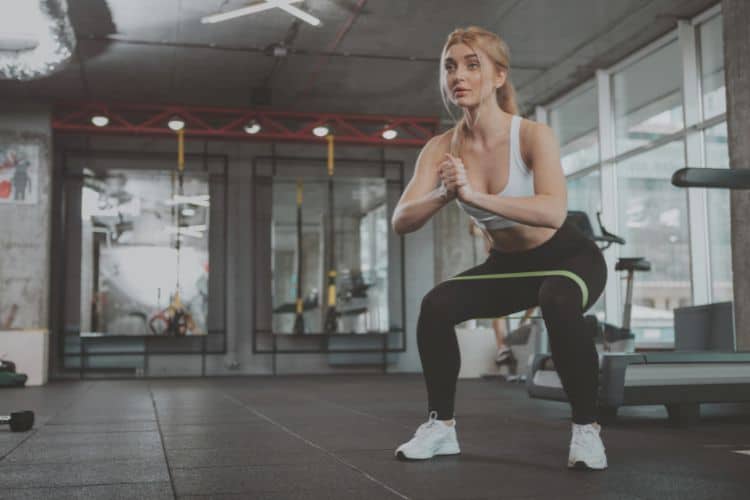Sign up for workout ideas, training advice, reviews of the latest gear and more.






When it comes to achieving optimal health and a toned physique, there’s a lot of chatter about specialized workouts. From targeting abs to toning thighs, there’s a routine for almost every part of the body. But what if we told you there’s a way to streamline your workout, save time, and still achieve phenomenal results? Welcome to the world of full-body routines, tailored especially for women!
Efficiency: Full-body workouts engage multiple muscle groups at once, offering the advantage of working out your entire body in a single session. This means less time in the gym and more time for other activities you love.
Burn More Calories: Engaging multiple muscle groups leads to a higher caloric burn. This can contribute significantly to weight loss and maintaining a healthy weight.
Improved Muscle Balance: These routines promote balanced muscle development. Rather than overdeveloping one area and neglecting another, full-body workouts ensure an even distribution of muscle growth and strength.
Frequent Training Opportunities: Since these workouts are balanced, they can be done more frequently, allowing you to see results faster.
The best full-body routines incorporate a mix of compound and isolation exercises. Here’s a beginner’s guide tailored for women:
Warm-Up (5-10 minutes): Always begin with a warm-up. This can be a brisk walk, light jogging, or dynamic stretches. The aim is to increase heart rate, warm up the muscles, and prepare the body for more intense activities.
Squats (3 sets of 10-15 reps): An excellent exercise for the legs and glutes. Ensure your form is correct: keep your feet shoulder-width apart and squat down as if sitting in a chair. Keep your back straight and knees over your toes.
Push-Ups (3 sets of 10-15 reps): Perfect for the upper body. If traditional push-ups are too challenging initially, start with knee push-ups and progress from there.
Lunges (3 sets of 10-15 reps per leg): Another leg and glute booster. Step forward and bend both knees, ensuring the front knee aligns with the ankle.
Dumbbell Rows (3 sets of 10-15 reps per arm): Great for the back and arms. Using a dumbbell, bend slightly forward and pull the weight up to your hip.
Plank (Hold for 30-60 seconds): Engages the core, shoulders, and back. Ensure your body forms a straight line from head to toe.
Deadlifts (3 sets of 10-15 reps): While it sounds intimidating, it’s fantastic for the back, glutes, and hamstrings. Always keep your back straight and lift with your legs.
Cool Down (5-10 minutes): Finish off with stretches for all major muscle groups. This helps in reducing muscle soreness and improving flexibility.
As you progress, you can customize your full-body routine to better suit your needs. This could mean adding weights, incorporating resistance bands, or including high-intensity intervals. Always ensure you’re pushing yourself, but not to the point of pain or injury.
While the allure of quick results can be tempting, consistency is the key to lasting and effective results. It’s okay if you start with lighter weights or fewer repetitions. The most important thing is that you’re moving and pushing yourself a little more each time.
One of the lesser-known benefits of full-body workouts is the hormonal advantage they provide. Engaging multiple muscle groups triggers the release of growth hormones and testosterone, both of which play a crucial role in muscle development and fat loss. For women, this doesn’t mean bulking up but rather achieving a more toned and lean physique.
Women are more susceptible to bone density loss as they age, especially post-menopause. Weight-bearing exercises, which are often part of full-body routines, have been shown to improve bone density, thereby reducing the risk of osteoporosis.
Many full-body exercises involve a range of motion that not only strengthens muscles but also enhances flexibility. Moreover, as these workouts promote balanced muscle growth, they naturally lead to better posture. Standing tall and straight can improve confidence and reduce the risk of back issues in the future.
It’s well-documented that exercise releases endorphins, often referred to as “feel-good hormones”. A full-body routine engages the entire body, amplifying the release of these endorphins, which can help in combating stress, anxiety, and even mild depression.
While strength training is an integral component of a full-body workout, integrating cardio can amplify the results. Here’s how to do it without spending extra hours at the gym:
Circuit Training: Instead of resting between sets, transition to another exercise targeting a different muscle group. This keeps the heart rate elevated, offering both strength and cardio benefits.
Jump Rope Intervals: Jump ropes aren’t just for kids! Incorporate 1-2 minute jump rope sessions between strength exercises to keep the intensity high.
Burpees: Love them or hate them; there’s no denying that burpees are a full-body workout on their own. Adding a set of 10-15 burpees between exercises can significantly boost the cardio component.
Although full-body workouts can be performed more frequently, recovery remains crucial. Here’s why:
Muscle Repair: The process of strength training creates tiny tears in your muscles. It’s during recovery that these tears heal, leading to muscle growth.
Avoid Overtraining: Overtraining can lead to fatigue, decreased performance, and increased risk of injury. Always listen to your body. If you’re feeling overly sore or fatigued, it might be a sign to take a rest day.
Nutritional Recovery: After a full-body workout, your muscles are eager for nutrients to kickstart the recovery process. Consuming a balanced mix of proteins and carbs can help in muscle repair and energy replenishment.
Women’s bodies go through numerous changes, from pregnancy to menopause and beyond. It’s essential to tailor workouts to suit these life stages:
Pregnancy: Always consult with a healthcare professional before exercising during pregnancy. Generally, low-impact exercises and avoiding overly strenuous activities are recommended.
Postpartum: The postpartum body requires special attention. Gentle full-body exercises can help regain strength and muscle tone. Again, consultation with a healthcare professional is crucial.
Menopause and Beyond: As hormone levels change, women might notice a decrease in muscle mass and bone density. A consistent full-body workout routine can help combat these changes, ensuring strength and vitality in the later years.
Full-body routines are more than just a time-saving strategy; they offer a comprehensive approach to fitness, ensuring balanced muscle development, improved flexibility, and enhanced overall health. Women of all ages can reap the multitude of benefits they offer, from hormonal balance to mental well-being. Remember, it’s not about the duration of the workout but the quality and consistency. Embrace full-body routines and watch as they revolutionize your fitness journey.
Stay up to date on the latest women’s health, fitness and lifestyle trends and tips.